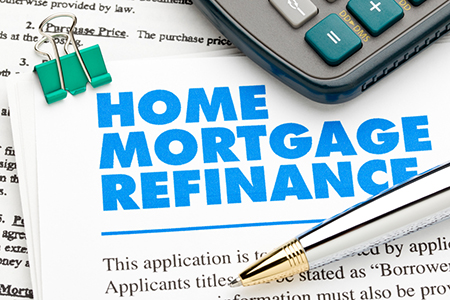(TNS)—Though mortgage rates have rebounded some from the lows seen in 2016, they remain very attractive. Many homeowners are refinancing before rates go higher.
Yes, you can save money by doing a simple refinance in which you swap a lower rate for your existing higher rate. But that’s just one way—and one reason—to refinance. There are at least four other reasons.
Here are some of your options.
Rate and Term Refinance
Nowadays, this is the most common form of refinancing. When you get a rate and term refinance, you replace your mortgage with a loan sporting a lower interest rate, and for roughly the same term. The term is the payoff period: a 30-year mortgage has a 30-year term.
Cash-Out Refinance
These were popular during the housing boom and contributed to the bust. When you get a cash-out refi, you borrow more money than the outstanding mortgage balance and you receive the difference in cash.
For example, you might have borrowed $225,000 a few years ago, you’ve been making payments faithfully and now you owe $200,000. Meanwhile, your home’s value has swelled. It can be appraised at $300,000. In this case, you can refinance for more than $200,000. In fact, you can borrow up to $240,000 without having to pay for mortgage insurance.
During the boom, a guy on my street got several cash-out refinances. At least one was a subprime loan. He ended up owing much more than he originally paid for the house. Eventually, he couldn’t afford the payments, forfeited the house and moved out of state.
There are responsible ways to use a cash-out refi. You can use the money to pay off high-interest debt, or you could use it for a home improvement: a swimming pool, solar panels or whatever.
Shorten the Term
You got a 30-year mortgage three or five years ago, and you want to refinance. You don’t have to start over with a 30-year repayment period. You can ask to pay it off in a shorter time than that—27 years, 25 years, 20 years or 15 years. Your choice.
If your preferred payoff period is more than 20 years, you’ll probably have to get a 30-year mortgage and ask the lender to amortize it over your preferred, shorter period. Most lenders offer 15-year mortgages, which generally have lower interest rates than 30-year loans. A few lenders offer 20-year mortgages with slightly lower rates.
Cash-In Refinance
Yes, in addition to the cash-out refinance, there’s such a thing as the cash-in refi. This happens when you have some money lying around and you spend it to pay off part of the old mortgage. Then the new, refinanced loan is for less than the old loan.
Cash-in refis used to be more popular. But in today’s low-interest environment, any spare cash would best be used to invest in something with a higher return than your mortgage interest rate.
Divorces can force a variety of the cash-in refi, in which one former spouse pays off a portion of the outstanding loan balance and the remaining spouse refinances the loan in her or his own name.
Refinance to Get Rid of Mortgage Insurance
You made a down payment of less than 20 percent, and you’ve been saddled with mortgage insurance payments as a result. But in the years since you got the mortgage, you paid down some of the debt and, more importantly, the value of your house went up a lot. If the outstanding loan amount is less than 80 percent of the home’s appraised value, you might be able to refinance into a loan without mortgage insurance.
This can be an especially valuable tactic if you have a mortgage insured by the Federal Housing Administration, also known as an FHA loan. With modern-day FHA loans, you can’t cancel the mortgage insurance—even when your loan-to-value ratio falls below 80 percent. The way to get rid of FHA mortgage insurance payments is to refinance (or to sell the house).
Visit Bankrate online at www.bankrate.com.
©2017 Bankrate.com
Distributed by Tribune Content Agency, LLC
For the latest real estate news and trends, bookmark RISMedia.com.











